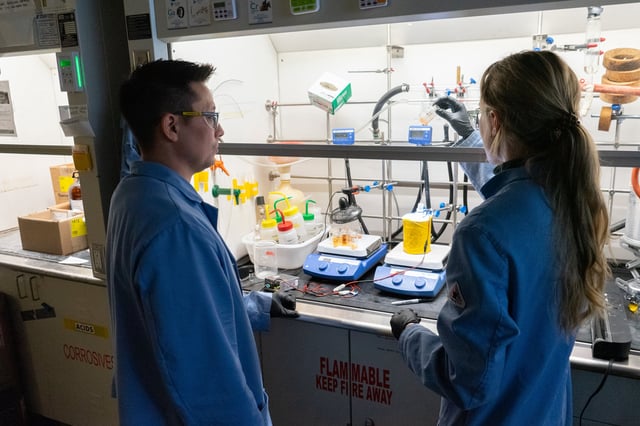Overview
- Colorado State University researchers led by Garret Miyake and Robert Paton reported in Science an organic photoredox system that transforms fossil fuel arenes into valuable chemicals without external heating.
- The catalyst absorbs two visible-light photons in sequence to accumulate the energy required for super-reducing reactions that break strong aromatic bonds.
- A proton-coupled electron transfer mechanism prevents back electron transfer, stabilizing reactive intermediates and sustaining high catalytic efficiency.
- Laboratory tests demonstrated efficient reduction of benzene and related arenes at room temperature, signaling potential cuts in energy demand and emissions for chemical production.
- Future development within the NSF Center for Sustainable Photoredox Catalysis is targeting applications such as ammonia synthesis, PFAS degradation and plastic upcycling.

